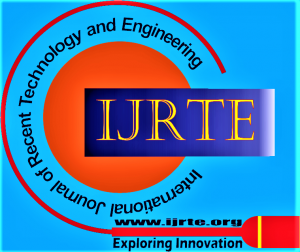![]()
Utilizing Raspberry Pi and Internet of Things (IoT) Frameworks for Comprehensive Monitoring of Urban Pollutants and Climate Variables
Thushara Hameed1, Maheswari Maruthakutti2, Pandimadevi Ganesan3
1Thushara Hameed, Lecturer, College of Engineering and Technology, UTAS, Nizwa, Sultanate of Oman.
2Maheswari Maruthakutti, Senior Lecturer, College of Engineering and Technology, UTAS, Nizwa.
3Pandimadevi Ganesan, Lecturer, College of Engineering and Technology, UTAS, Nizwa.
Manuscript received on 30 October 2024 | First Revised Manuscript received on 14 November 2024 | Second Revised Manuscript received on 13 December 2024 | Manuscript Accepted on 15 January 2025 | Manuscript published on 30 January 2025 | PP: 20-26 | Volume-13 Issue-5, January 2025 | Retrieval Number: 100.1/ijrte.E818413050125 | DOI: 10.35940/ijrte.E8184.13050125
Open Access | Editorial and Publishing Policies | Cite | Zenodo | OJS | Indexing and Abstracting
© The Authors. Blue Eyes Intelligence Engineering and Sciences Publication (BEIESP). This is an open access article under the CC-BY-NC-ND license (http://creativecommons.org/licenses/by-nc-nd/4.0/)
Abstract: Global warming is the effect of a rise in Earth’s climate temperature due to air pollution. Urban areas have higher levels of air pollution than rural areas due to increased traffic and rapid development. In addition to brief health problems like headaches, eye infections, and throat in-factions, pollution also has lengthy health repercussions like lung cancer and heart disease. As a result, it’s important to keep an eye on the many climatic and pollution indicators, including light intensity, temperature, humidity, air pressure, oxygen and carbon dioxide level and camera. Using suitable equipment and Internet of Things (IoT) technologies, a pollution and climate monitoring system is constructed in the proposed paper that can measure the parameters above at regular intervals. The system then uploads the data to a webpage in the Thing Speak. The IoT analytics platform service Thing Speak enables the collection, visualization, and analysis of real-time data streams. The sensors are used to feed data to Thing Speak, which instantly visualizes the data in a graph. The main tool for gathering data from the sensors and sending parameters to the website is the Raspberry Pi3 computer. The software code is developed using Python. By logging on to the website from any location in the world, one can view the submitted pollution and climate parameters of a specific location.
Keywords: Raspberry Pi 3 Model 3B, DHT11 Sensor, Pressure Sensor, LDR, I2C LCD, MQ2 Sensor, Camera and Thing Speak.
Scope of the Article: Internet of Things (IoT)
